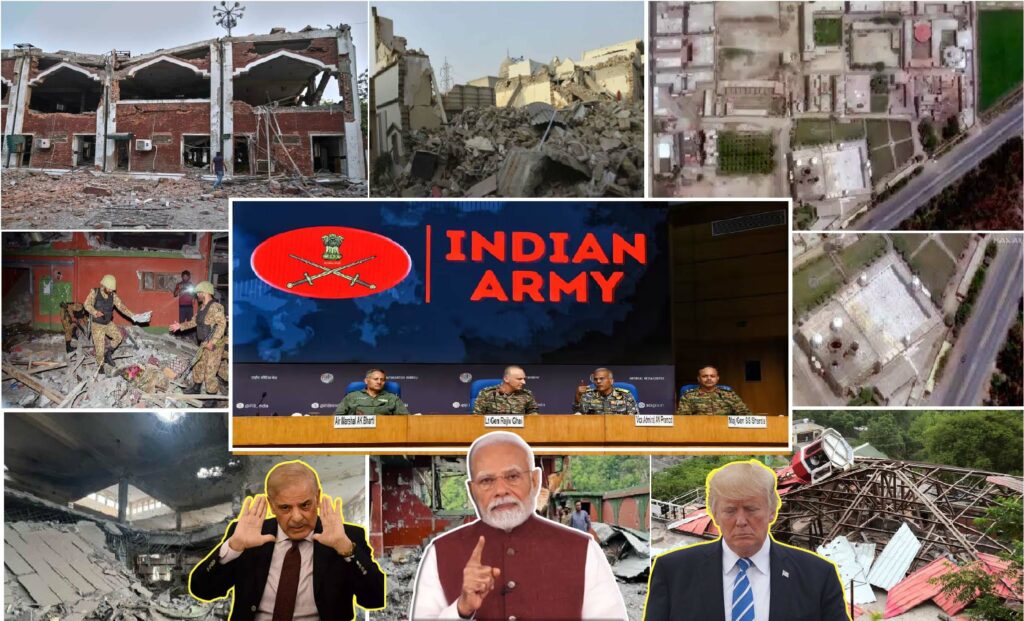
- India’s decision to agree to a military de-escalation that was initiated by Pakistan’s DGMO was a calculated tactical and military move, made after conveying its deterrent capability.
- Senator Marco Rubio claimed high-level diplomatic efforts to resolve India-Pakistan tensions, while Vice President Vance had earlier dismissed the conflict as “none of our business,” highlighting the Trump administration’s pattern of projecting neutrality while seeking credit for positive outcomes.
- The Trump administration’s pattern of taking undue credit, such as in the case of the Israel-Hamas ceasefire in January 2025 and promises on Ukraine-Russia peace, casts aspersions on the credibility of their assertions.
- India announced only military de-escalation, not a ceasefire, emphasising preparedness for future threats from Pakistan and stressing that lasting peace depends on addressing terrorism originating from Pakistan and its state support.
After the horrific terror attack on tourists in Pahalgam in Kashmir on 22nd April 2025, the growing tension between India and Pakistan escalated to intense military actions. After 18 days, India and Pakistan announced a complete de-escalation, effective immediately from 5:00 p.m. IST on May 10, 2025. The agreement was finalised through a direct conversation between the Directors General of Military Operations of both India and Pakistan. Which was intended to be a pause in hostilities that had reached alarming levels, especially after the launch of “Operation Sindoor” by India on May 7th midnight. India launched a military operation in retaliation for the terrorist attack in Pahalgam on 22nd April, a precision strike aimed at terrorist camps within Pakistani territory.
What influenced India to agree to a military De-escalation?
India’s decision to agree to a de-escalation was primarily driven by strategic, not diplomatic, considerations. India had communicated clearly through its actions and statements that the military de-escalation was not an outcome of negotiation, as Pakistan tried to portray. Rather, it was a tactical decision to de-escalate after achieving specific operational objectives, particularly the targeting of terror camps in Pakistan and Pakistan-Occupied Kashmir (Pok). Also, India didn’t use the word “ceasefire” while announcing the bilateral de-escalation agreement.
In line with this, Indian Foreign Secretary Vikram Misri stated during the press briefing that the military de-escalation was initiated by Pakistan’s DGMO, who contacted his Indian counterpart at 3:35 p.m. IST, proposing a halt to military operations. India agreed, with the caution that it retains its right to respond to any future cross-border terrorism. Foreign Minister S. Jaishankar outlined that this ceasefire does not signal any softening of India’s stance on terrorism, and said that “India will continue to maintain a firm and uncompromising stance against terrorism in all its forms and manifestations.”
The timing of the military de-escalation was shortly after India demonstrated military superiority and after Pakistan’s failed retaliatory strikes. The press briefing of 11th May by Indian DGMO Lt Gen Rajiv Ghai reported that over 100 terrorists, including high-value targets, were killed in precision strikes on terror infrastructure. Indian air defences neutralised Pakistani airspace violations. India retaliated by hitting key Pakistani air bases and radar sites, causing 35–40 casualties and downing several aircraft. This suggests that India used the escalation to reinforce deterrence, enhance its regional standing, and extract strategic concessions without entering formal negotiations.
What Role does the United States play?
Though the United States claims to have played a proactive role in the de-escalation process, which Pakistan readily admitted, India has not yet acknowledged the role of the US in the cessation of the hostilities. Statements from U.S. officials, including the self-serving statements and posts by President Donald Trump, National Security Advisor Marco Rubio, and Vice President JD Vance, emphasised U.S. engagement with both nations’ leadership in the 48 hours preceding the ceasefire.
On Truth Social, President Trump first announced the de-escalation agreement even before Indian and Pakistani officials made it public. He claimed and took credit for this agreement, stating: “After a long night of talks mediated by the United States, I am pleased to announce that India and Pakistan have agreed to a full and immediate ceasefire.”
Identically, NSA Marco Rubio claimed high-level meetings with Indian and Pakistani leaders, including PMs Narendra Modi and Shehbaz Sharif, National Security Advisors, and Foreign Ministers of both countries. The U.S. position appeared inconsistent. While Rubio claimed to have diplomatically engaged to resolve this issue, Vice President Vance remarked on May 8 in an interview with Fox News that the conflict was “none of our business,” suggesting a hands-off stance.
This duality points to a pattern in the Trump administration’s foreign policy. It projects diplomatic neutrality while simultaneously seeking credit for any positive outcome. U.S. involvement, which was restricted to urging restraint, was not the catalyst for the ceasefire and was rather part of broader backchannel communication.
Why did India ignore the US’s involvement, while Pakistan Acknowledged It?
India’s ignoring the US involvement in the press briefings by officials is consistent with its longstanding foreign policy doctrine, which dates back to the Simla Agreement in 1972. India strongly opposes third-party mediation on intervention in bilateral disputes with Pakistan, as laid out in the Shimla Agreement.
India has historically rejected any external role in its engagements with Pakistan, especially on matters involving terrorism and sovereignty. Acknowledging U.S. involvement would have contradicted this strategic posture, risked setting a precedent for future mediation attempts, and potentially weakened India’s message of self-determined deterrence.
In contrast, historically, Pakistan benefited from internationalising the issue. Therefore, it was evident that the Pakistani Foreign Minister Ishaq Dar publicly thanked various states for their “active and natural involvement,”. This gesture is aligned with Pakistan’s historical effort to draw in third-party support and play the victim card, particularly during times of military or diplomatic crisis. Pakistan mentioned U.S. and other international efforts to present itself as a ‘peace-loving’ country and gain support both inside the country and from the world.
Moreover, the asymmetry in military outcomes, with India appearing to be in control of the whole situation, made it logical for Pakistan to emphasise international mediation as a means to justify its decision to cease military hostilities.
Geopolitical Context and Implications
The U.S. claim of brokering the ceasefire must be evaluated with scepticism. India had not formally sought mediation and maintained operational independence throughout. Meanwhile, the Trump administration’s pattern of claiming diplomatic victories, such as in the case of the Israel-Hamas ceasefire in January 2025 and promises on Ukraine-Russia peace, further complicates the credibility of their assertions.
The U.S. interest in South Asia, especially under Trump, is shaped by geo-economic motives. This includes finalising a bilateral trade deal with India, reducing dependency on China, and maintaining strategic influence in the Indo-Pacific region. Therefore, even if the U.S. officials may have claimed to play a behind-the-scenes role in mediating de-escalation, it is an overstatement to claim they facilitated or mediated the ceasefire. Rather, it gravitates naturally towards that.
Conclusion
India’s decision to agree to a military de-escalation was a calculated military and diplomatic move, made after conveying its deterrent capability. The United States played a peripheral advisory role, but not a mediating one. India’s silence on U.S. involvement was a deliberate assertion of its sovereignty and bilateral policy approach.
In contrast, Pakistan welcomed and highlighted international efforts to support its narrative of peaceful intent. As the situation develops, real credit for the military de-escalation rests with the two militaries. However, a few hours after the agreement, many Pakistani unarmed aircraft and drones were spotted in the Indian airspace, indicating a clear violation of the agreement. Moreover, the military actions have stopped for now. India only announced military de-escalation, not for a “ceasefire”, and is prepared for future misadventures by Pakistan and its proxies. A long-term peace will depend on the handling of the core issues of terrorism emanating from Pakistan and the support it gets from the state and the military.
Biswarup Baidya is a PhD Research Scholar in the Department of International Relations at Jadavpur University. He has previously served as a Research Intern at the Indian Council of World Affairs (ICWA).
